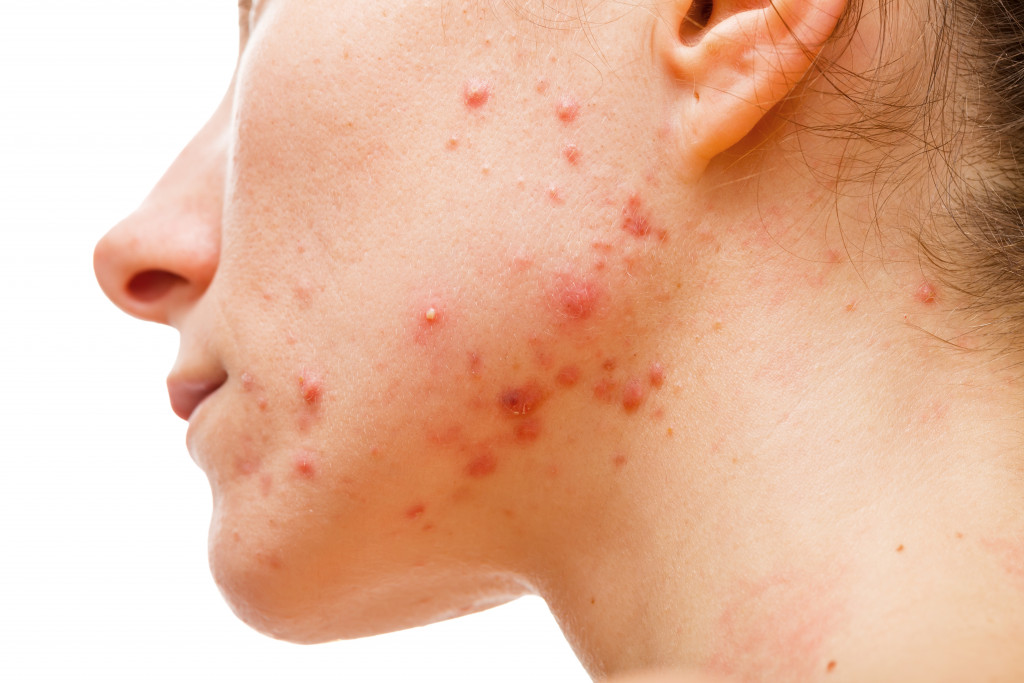• Dead skin cells are a natural part of our skin renewal process, but excessive build-up can cause skin problems.
• Increased dead skin cell buildup can lead to bacterial or fungal infections, acne, irritations, and inflammation.
• It can also reduce the effectiveness of skin care products, increase the risk of skin cancer, and cause foot infections.
• Vitamin C, exfoliation, and moisturizing can help reduce dead skin cell build-up and maintain healthy skin cells.
Dead skin cells are a natural and constant part of our body’s renewal process, but too many can harm our health. They can cause various skin problems and even lead to severe medical conditions. Unfortunately, many of us underestimate the potential risks of dead skin cells. Here’s what you need to know about dead skin cells and why you should take them seriously.
What Are Dead Skin Cells?
Dead skin cells are a normal part of the outermost skin layer known as the epidermis. The epidermis contains millions of cells that are constantly regenerating. This process starts with healthy new cells forming at the bottom layers and gradually reaching the surface. As a result, older skin cells die off and become shed from the surface, forming dead skin flakes.
The common signs of an excessive build-up of dead skin cells are dull, flaky, and dry skin. It can also cause itchiness, redness, and irritation. In some cases, it can even lead to bacterial or fungal infections.
Increased Risk of Infection and Acne
Dead skin cells accumulate on the skin’s surface, creating an ideal environment for harmful bacteria to thrive. This can lead to an increased risk of infection and cause acne breakouts. Moreover, when we touch our face, we transfer dead skin cells, oil, and bacteria, which can exacerbate the problem. Keeping our skin clean and exfoliated can help reduce this risk.
Skin Irritation and Inflammation
Dead skin cells can clog our pores, causing irritation, itchiness, and inflammation. This can be particularly problematic for people with sensitive skin, eczema, or psoriasis. Additionally, dead skin cells can make the skin look dull and lifeless, causing people to look older than they are.
Increased Risk of Skin Cancer

Dead skin cells can act as a barrier to sunscreen, reducing its effectiveness in protecting our skin from harmful UV rays. This can increase the risk of developing skin cancer, one of the deadliest forms of cancer. Therefore, it’s important to exfoliate regularly to remove dead skin cells and ensure your sunscreen works at its full potential.
Reduced Effectiveness of Skincare Products
When dead skin cells accumulate on the surface of our skin, they can prevent skincare products from penetrating deeper into the skin, making them less effective. This means you’re spending money on expensive skincare products, but they’re not doing the job effectively. Removing dead skin cells through exfoliation can help improve the effectiveness of your skincare routine.
Increased Risk of Foot Infections
Dead skin cells can accumulate on our feet, creating a breeding ground for harmful bacteria, fungi, and viruses. This can lead to foot infections such as athletes’ foot or nail fungus. Additionally, dead skin can make our feet look unsightly and lead to cracked heels. Regularly exfoliating and moisturizing your feet can help prevent these problems.
Dealing With Dead Skin Cells
Dead skill cells are a natural part of our body’s renewal process, and people shouldn’t try to stop them completely. However, these dead cells mustn’t be excessive in any form. Here are ways you can deal with dead skin cells on your skin:
Vitamin C
Certain vitamins can help promote skin regeneration, and Vitamin C is one of them. It can help reduce dead skin cell buildup by stimulating collagen production and helping to repair damaged skin. Additionally, you can purchase affordable vitamin C serum online. These serums have been designed to penetrate the skin quickly and effectively. You can include it in your nightly skincare routine for the best results.
Exfoliation
Exfoliating your face and body regularly can help remove dead skin cells and reveal brighter, healthier-looking skin underneath. Various exfoliators, such as chemical exfoliators and physical scrubs, are available on the market. Chemical exfoliators use acids to remove dead skin cells without causing any irritation, while physical scrubs use microbeads or other coarse particles to slough off dead skin.
Moisturizer

Moisturizing your skin regularly can help keep it hydrated, allowing it to shed dead skin cells naturally. Make sure to choose a moisturizer suitable for your skin type and free of any harsh chemicals. Additionally, you should use SPF protection daily to ensure your skin is shielded from harmful UV radiation, which can cause damage and aging.
Dead skin cells are inevitable in our body’s renewal process, but too many can lead to serious health problems. Following a skincare routine and paying attention to your body’s needs is the key to maintaining healthy skin cells and avoiding unwanted side effects. Taking these simple steps can help you keep your skin looking fresh, radiant, and healthy.





